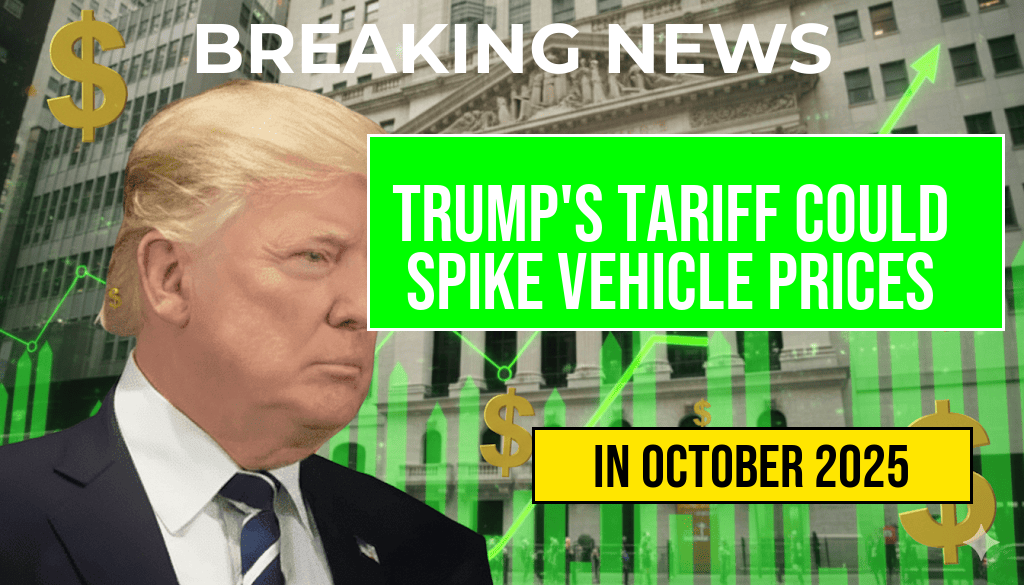Former President Donald Trump’s recent threat to impose tariffs on imported vehicles could significantly impact the American auto market, potentially causing prices to surge by an estimated $5,286 per vehicle. This alarming projection comes from industry analysts who warn that such tariffs could disrupt supply chains, inflate the cost of production, and ultimately be passed on to consumers. With auto prices already at historic highs, the implications of these proposed tariffs could push affordability further out of reach for many Americans. The auto industry, which has been grappling with various challenges over the past few years, now faces another potential crisis as this tariff threat looms large.
Impact on Vehicle Prices
According to a report from the Forbes, the potential tariffs could add an average of $5,286 to the cost of a new vehicle. This increase is primarily attributed to higher costs for manufacturers who rely on imported parts and materials. As vehicle production becomes more expensive, manufacturers are likely to pass these costs onto consumers, leading to higher retail prices.
Factors Contributing to Price Increases
- Imported Parts Dependency: Many automakers depend heavily on foreign suppliers for parts, which means tariffs could directly impact production costs.
- Supply Chain Disruptions: Tariffs may exacerbate existing supply chain issues, particularly in the wake of the COVID-19 pandemic and ongoing global semiconductor shortages.
- Market Competition: Increased prices may reduce competition in the market, as smaller manufacturers struggle to keep up with larger competitors who can absorb costs more effectively.
Historical Context of Tariffs in the Auto Industry
The auto industry has a complex history with tariffs. In the late 1980s, the United States imposed tariffs on Japanese vehicles, aiming to protect domestic manufacturers. However, these tariffs led to higher prices for consumers and complicated trade relationships. Current concerns echo these past experiences, raising questions about the long-term effects on the industry and consumer behavior.
Potential Economic Ramifications
The economic consequences of Trump’s tariff threat extend beyond just vehicle prices. Analysts are concerned that such tariffs could lead to broader inflationary pressures across various sectors, as increased vehicle costs could influence everything from insurance rates to the price of used cars. The Wikipedia entry on inflation outlines how increased costs in one area can lead to a ripple effect throughout the economy.
Consumer Reactions and Market Trends
As consumers become aware of the potential for rising vehicle prices, there may be shifts in buying behavior. Some may choose to delay purchases in anticipation of price drops, while others might rush to buy before prices increase further. The current market dynamics indicate that consumer confidence is fragile, and significant price increases could lead to a slowdown in sales.
| Vehicle Type | Estimated Price Increase |
|---|---|
| Sedans | $4,800 |
| SUVs | $5,286 |
| Trucks | $5,500 |
Conclusion
As the auto industry braces for the potential consequences of Trump’s tariff threat, the focus remains on how these changes will affect consumers and the broader economy. With vehicle prices already at a record high, the prospect of an additional average cost of more than $5,000 raises significant concerns about accessibility and affordability in the automotive market. Stakeholders, including manufacturers, consumers, and policymakers, will need to navigate these turbulent waters carefully to avoid exacerbating an already complex situation.
Frequently Asked Questions
What are the potential effects of Trump’s tariff threat on vehicle prices?
Trump’s tariff threat could result in a significant increase in vehicle prices, with estimates suggesting a rise of nearly $5,286 per vehicle.
Which types of vehicles are most likely to be affected by the tariffs?
The tariffs are expected to impact a wide range of vehicles, but especially those that rely heavily on imported parts or are manufactured outside of the United States.
How do tariffs influence the automotive market?
Tariffs increase the cost of importing goods, which can lead to higher production costs for automakers. These costs are often passed on to consumers in the form of higher vehicle prices.
What are some potential consequences for consumers if vehicle prices rise?
If vehicle prices rise significantly, consumers may face affordability challenges, potentially leading to decreased sales in the automotive market and a shift towards cheaper or used vehicles.
Are there any alternatives to tariffs that could be considered?
Alternatives to tariffs may include negotiating trade agreements, providing subsidies for domestic manufacturers, or investing in local production to reduce reliance on imports.

Leave a Reply